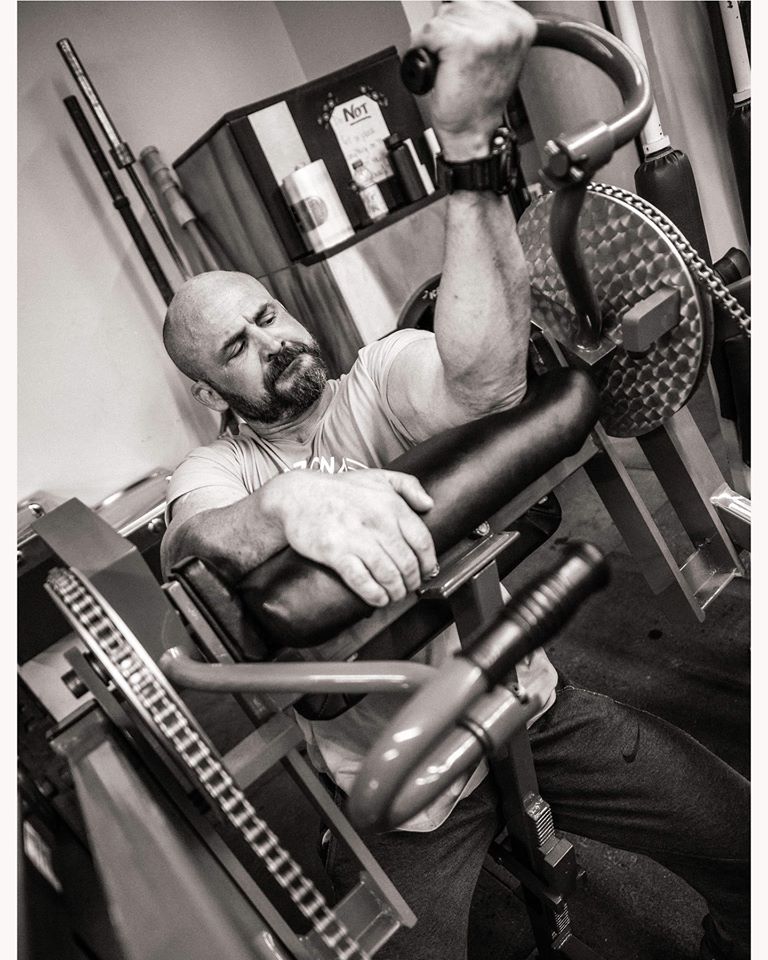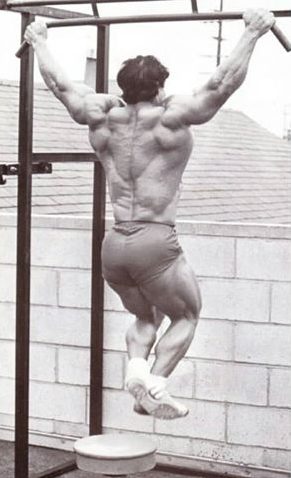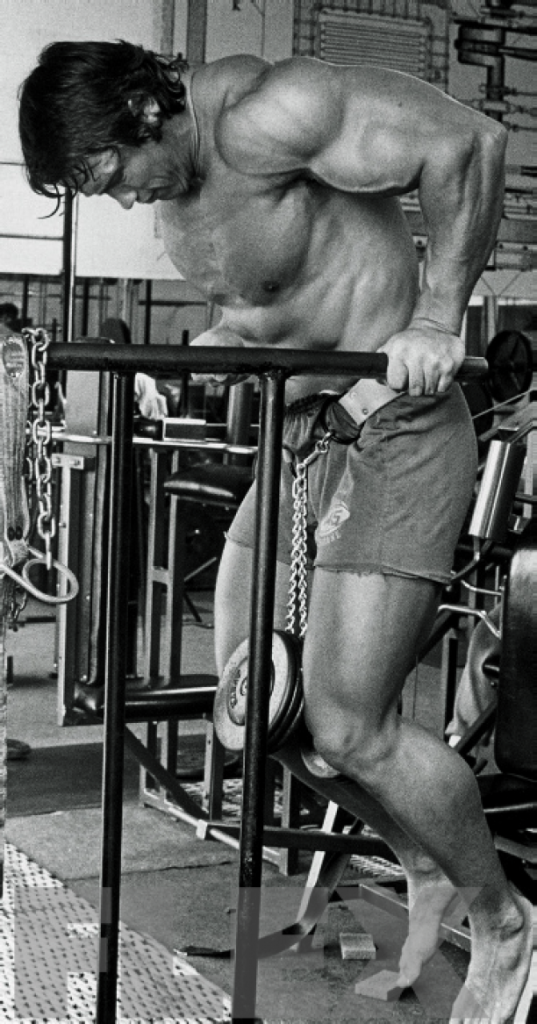In the most basic terms, Hypertrophy refers to an increase in the size of a…
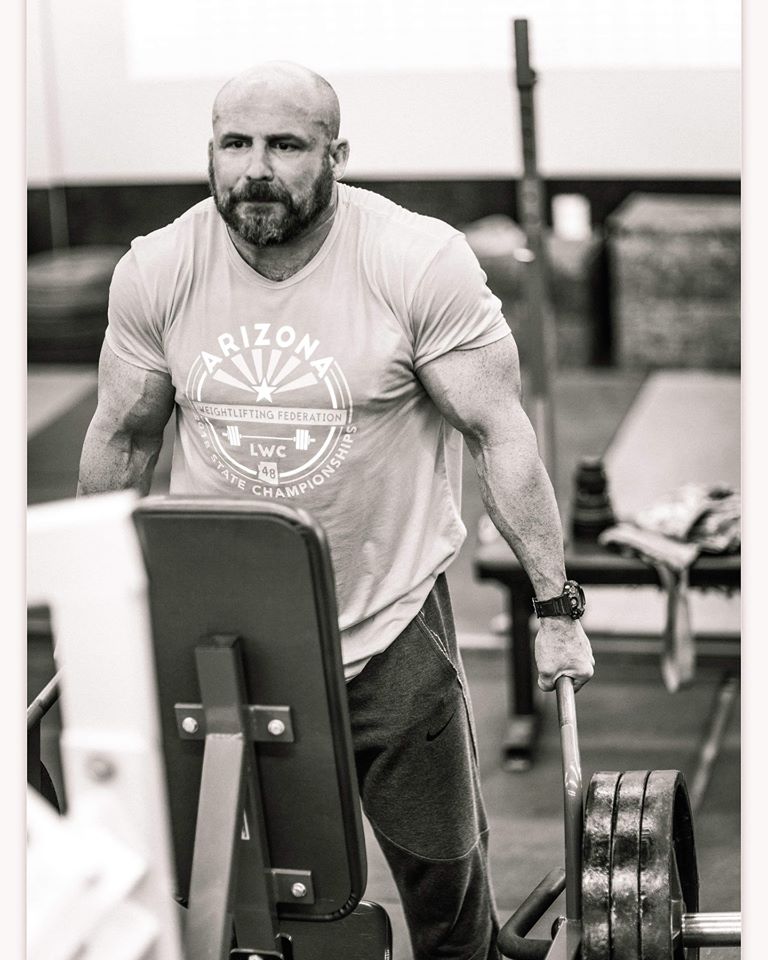
Tri-Sets: Part 2
In this article, we will discuss five variables that can be manipulated in order to change the stimulus created by Tri-Sets.
A Tri-Set is performed by completing three exercises in succession, no rest between exercises.
Link to previous Tri-Sets Article
Five Key Variables:
- Compound vs. Isolation
- Movement Tempo
- Movement Angle
- Push, Pull, or Combination
- Number of Reps
_______________________________________________________________
Compound vs. Isolation
A compound exercise can also be referred to as a multiple-joint exercise. Compound exercises are typically characterized by large movements, heavier loads, and more musculature involved. These characteristics often make them more taxing when compared to isolation movements. An example of a compound exercise would be a bench press, where the athlete uses the muscles of the chest, shoulders, and triceps.
An isolation exercise involves movement around a single joint, typically characterized by smaller movements, lighter loads, and less musculature involved. Isolation exercises tend to be less systematically taxing, while heavily taxing a single muscle group. An example of an isolation exercise would be a pec deck movement, where the focus is completely on the muscles of the chest.
Tri-Sets can be comprised of multiple combinations of compound and isolation exercises. Exercise combinations can be manipulated in order to achieve the desired stimulus.
Some key effects of various combinations of compound and isolation exercises:
1. Combining three compound exercises is typically more systematically taxing than a combination that includes an isolation exercise or a combination of multiple isolation exercises. Beware of creating Tri-Sets that are too redundant.
2. Isolation exercises can be included for several reasons:
A. Pre-Exhaustion: An isolation exercise preceding a compound
exercise for the same muscle group.
B. Post-Exhaustion: An isolation exercise following a compound
exercise for the same muscle group.
C. Decrease systemic workload, allowing for a greater effort during
the third exercise.
Examples of Exercise Combinations:
- Compound: Bench Press
- Compound: Shoulder Press
- Compound: Dip
- Compound: Incline Press
- Isolation: Dumbbell Fly
- Compound: Decline Press
- Isolation: Lateral Raise
- Compound: Shoulder Press
- Isolation: Shoulder Shrug
- Isolation: Front Delt Raise
- Isolation: Lateral Raise
- Isolation: Rear Delt Fly
You can combine compound and isolation exercises in multiple ways, depending on the desired training effect.
______________________________________________________________________________
Movement Tempo
Varying the tempo of exercises comprising a Tri-Set is a means of adding variety to training stimulus.
Two Tempos that work well in Tri-Sets:
- :04 Eccentric (lower the weight over :04 seconds)
- :03 Eccentric/:03 Concentric (lower the weight over :03 seconds and raise the weight over :03 seconds)
Examples:
3 rounds:
No rest between exercises.
12 Shoulder Press
8 Tempo Lateral Raise (:04 eccentric)
12 Seated Dip
(alternate rounds with a partner)
3 rounds:
No rest between exercises.
12 Incline Press
8 Tempo Pec Deck (:03 eccentric/:03 concentric)
12 Decline Press
(alternate rounds with a partner)
______________________________________________________________________________
Movement Angle
Changing exercise angle allows for further fatigue of a muscle group by allowing continued work on the same muscle group that may not be possible without a change in angle.
Varying movement angles can also be used to change working muscle groups in order to allow for recovery of the first movement worked, yet continuing the systemic fatigue.
_____________________________________________________________________________
Pushing movement angles & exercises which demonstrate the movement angle:
Push Vertically Up: Shoulder Press
Push Vertically Down: Dip
Push Horizontally: Bench Press
Push Up at an Angle: Incline Bench Press
Push Down at an Angle: Decline Bench Press
______________________________________________________________________________
Pulling movement angles & exercises which demonstrate the movement angle:
Pull Vertically Up: Upright Row
Pull Vertically Down: Front Pulldown
Pull Horizontally: Seated Row
Pull Up at an Angle: Low Row
Pull Down at an Angle: High Row
Examples:
3 rounds:
No rest between exercises.
8-12 High Row
8-12 Pullover
8-12 Low Row
(alternate rounds with a partner)
3 rounds:
No rest between exercises.
8-12 Shoulder Press
8-12 Seated Row
8-12 Seated Dip
(alternate rounds with a partner)
3 rounds:
No rest between exercises.
8-12 Front Pulldown
8-12 Chest Press
8-12 Upright Row
(alternate rounds with a partner)
______________________________________________________________________________
Push, Pull, and Combining Exercises
The effect of a Tri-Set can be significantly altered based on the combination of exercises. Mixing pushing and pulling movements allows for some localized muscular recovery during the antagonistic movement. Combinations of different movement types can be used to create a more comprehensive stimulus of the body. Combining movement types also allows for the use of larger loads, as a result of working opposing muscles (thereby working musculature that is relatively fresh)
Examples:
- Vertical Push Up: Shoulder Press
- Horizontal Pull: Seated Row
- Vertical Push Down: Seated Dip
- Vertical Pull Down: Weighted Chin-up
- Rotational Pull Down: Pullover
- Vertical Push Down: Weighted Dip
- Pull Down at an Angle: High Row
- Horizontal Push: Chest Press
- Pull Up at an Angle: Low Row
All three exercises can be worked relatively hard because of the different muscle groups being worked. This also allows for greater systemic stress due to the relatively large amount of work performed in a short period of time.
______________________________________________________________________________
Number of Reps
Reps can be adjusted in an attempt to address several demands in a single set:
- Decreasing work capacity due to fatigue.
- Exercise tempo
- Load (lower reps for heavier strength work)
- Specific factors associated with a particular exercise.
Examples:
Lower reps on tempo exercises: this accounts for the increased demand of tempo exercises and the increased duration of tempo exercises.
3 rounds:
No rest between exercises.
12 Incline Press
8 Tempo Pec Deck (:04 eccentric)
12 Decline Press
(alternate rounds with a partner)
___________________________________________________________________________
Decreasing reps to accommodate for fatigue: reps decrease as work capacity decreases due to fatigue.
Complete as quickly as possible with good form:
50 Chest Press
40 Pec Deck
30 Seated Dip
(complete all reps of each exercise before moving to the next)
___________________________________________________________________________
Lower reps for strength emphasis: lower reps allow for greater loads to be used on exercises where the emphasis is on strength.
4 rounds:
No rest between exercises.
5 Weighted Chin-up
10 Machine Pullover
5 Weighted Dip
(alternate rounds with a partner)
These variables can be mixed in an infinite number of ways. Keep training varied and interesting and adapt things to your purposes.
_____________________________________________________________________________
Additional examples of Tri-Set variations.
Three compound pushing exercises at three different angles.
3 rounds:
No rest between exercises.
8-12 Shoulder Press
8-12 Chest Press
8-12 Seated Dip
(alternate rounds with a partner)
______________________________________________________________________________
Two compound and one isolation pulling exercises at three different angles.
3 rounds:
No rest between exercises.
8-12 Supinated Pulldown
8-12 Pullover
8-12 Seated Row
(alternate rounds with a partner)
______________________________________________________________________________
One compound and two isolation pushing exercises at two different angles.
3 rounds:
No rest between exercises.
8-12 Pec Deck
8-12 Chest Press
8-12 Triceps Pushdown
(alternate rounds with a partner)
_____________________________________________________________________________
Three isolation exercises combining push and pull at three different angles.
3 rounds:
No rest between exercises.
8-12 Dumbbell Fly
8-12 Lateral Raise
8-12 Rear Delt Fly
(alternate rounds with a partner)
_____________________________________________________________________________
Two compound and one tempo isolation pulling exercises at three different angles.
3 rounds:
No rest between exercises.
8-12 High Row
8-12 Tempo Rear Delt Fly (:04 eccentric)
8-12 Low Row
(alternate rounds with a partner)
__________________________
Two compound and one isolation exercises combining push and pull at three different angles.
3 rounds:
No rest between exercises.
8-12 Supinated Pulldown
8-12 Pullover
8-12 Seated Dip
(alternate rounds with a partner)
______________________________________________________________________________
Three compound exercises combining push and pull at three different angles.
3 rounds:
No rest between exercises.
8-12 Shoulder Press
8-12 Upright Row
8-12 Seated Dip
(alternate rounds with a partner)
______________________________________________________________________________
One compound exercise and two isolation exercises combining push and pull at three different angles. Note the pulling exercise separating the pushing exercises to allow for recovery of the pushing muscles.
3 rounds:
No rest between exercises.
5-8 Weighted Dip
6-10 Barbell Curl
8-12 Overhead Triceps Extension
(alternate rounds with a partner)
______________________________________________________________________________
One compound and two isolation pulling exercises at three different angles. Note the single joint exercise separating the two exercises involving the biceps in order to allow for recovery.
3 rounds:
No rest between exercises.
8-12 Seated Row
8-12 Pullover
8-12 Biceps Curl
(alternate rounds with a partner)
______________________________________________________________________________
Tri-Sets can be used to build a complete upper body workout or a single Tri-Set can be used to finish a workout. The following are examples of Complete Upper Body Workouts.
Each Tri-Set targets a particular muscle group.
3 rounds:
No rest between exercises.
8-12 Incline Press
8-12 Dumbbell Fly
8-12 Decline Press
(alternate rounds with a partner)
3 rounds:
No rest between exercises.
8-12 High Row
8-12 Pullover
8-12 Low Row
(alternate rounds with a partner)
3 rounds:
No rest between exercises.
8-12 Lateral Raise
8-12 Shoulder Press
8-12 Rear Delt Fly
(alternate rounds with a partner)
3 rounds:
No rest between exercises.
8-12 Triceps Extension
8-12 Biceps Curl
8-12 Gripper
(alternate rounds with a partner)
___________________________________________________________________________
Each Tri-Set targets multiple muscle groups.
3 rounds:
No rest between exercises.
8-12 Front Pulldown
8-12 Chest Press
8-12 Upright Row
(alternate rounds with a partner)
3 rounds:
No rest between exercises.
8-12 Shoulder Press
8-12 Seated Row
8-12 Seated Dip
(alternate rounds with a partner)
3 rounds:
No rest between exercises.
8-12 Pec Deck
8-12 Decline Press
8-12 Triceps Extension
(alternate rounds with a partner)
3 rounds:
No rest between exercises.
8-12 Lateral Raise
8-12 Upright Row
8-12 Biceps Curl
(alternate rounds with a partner)
______________________________________________________________________________
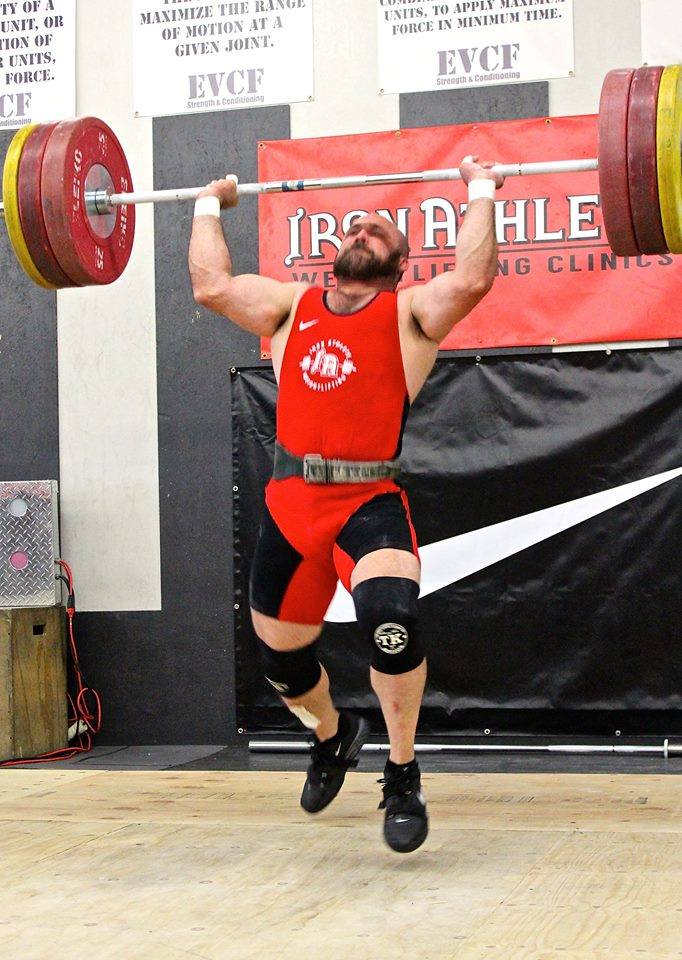
-Bachelor of Science, Auburn University 1997
-Master of Education, Northern Arizona University 2005
-USA Weightlifting Club Coach 2001
-CrossFit Level 1 Instructor 2009
-USA Weightlifting National Coach 2012
-EVCF Regional Team Coach 2013, 2014, 2015, 2016, 2017,2018
-EVCF CrossFit Games Team Coach 2014
-Coach CrossFit Games Masters Athlete (Bruce Briggs) 2018
-Masters National Record Holder: Snatch 130kg & Total 287kg (105kg 40-44)
-5 x American Masters Weightlifting Champion
-5 x American Masters – Best Lifter (2 x 35-39yrs, 3 x 40-44yrs)
-3 x Masters Nationals Weightlifting Runner-up
-President of Arizona Weightlifting Federation – LWC 48, 2016-current
